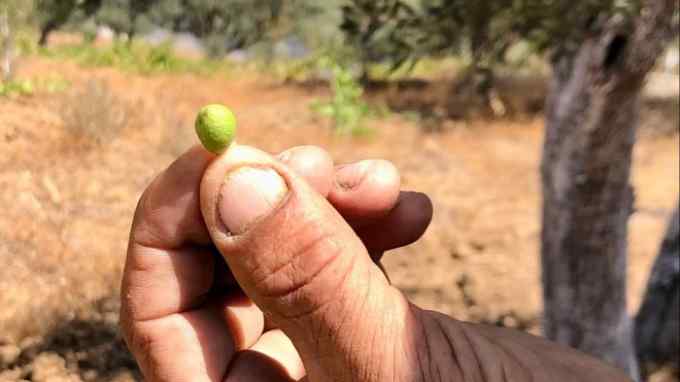Morocco’s post-Covid tourist boom on track despite earthquake shock

Simply sign up to the Travel & leisure industry myFT Digest -- delivered directly to your inbox.
Morocco’s tourism industry was on track for record earnings by the end of 2023 — until an earthquake struck on September 8, killing some 3,000 people, most of them in villages in the High Atlas mountains. In the historic city of Marrakech, the country’s top tourist destination, there were also deaths and damage to buildings in the medina — the old walled citadel.
Some visitors cancelled trips in the immediate aftermath of the tragedy. But officials say overall the impact is likely to be limited in this crucial sector, which accounts for 7 per cent of gross domestic product and employs 5 per cent of the workforce.
Fatim-Zahra Ammor, tourism minister, says: “Cancellations have remained lower than our expectations,” adding: “We are optimistic and confident in our year-end projections.”
The expectation before the tremor was that Morocco would receive an unprecedented 14mn visitors by the end of the year. Ammor says 8.6mn people visited in the first seven months of 2023 — an increase of 15 per cent over the same period in 2019, just months before the Covid pandemic caused sharp falls in tourism and nearly two years of travel restrictions.
Tourist revenue in the first seven months of 2023 was $5.6bn — 38 per cent higher than in the same period in 2019, according to the minister.
James Wix, director of Le Farnatchi Hotel in Marrakech, says tourism in the city has “taken a bit of a hit”. The boutique hotel, he adds, will be closed until the end of October to repair some “superficial damage”.
“We haven’t seen as many cancellations, though, going into November and December,” he says. “I would hope things would normalise by then, but it is impossible to tell at this point.”
One encouraging development, Wix says, is that the IMF and the World Bank have decided to proceed with their 2023 annual meetings in Marrakech on October 9-15. He adds that souks, shops and restaurants are open as usual. And, on Wednesday, the country received another boost by being named alongside Spain and Portugal as joint hosts of the 2030 football World Cup by governing body Fifa.
Ammor says the World Bank and IMF meetings will “place Morocco in the global spotlight, which is expected to boost tourist arrivals and earnings”.

In Tangier, in northern Morocco, Aziz Begdouri, owner of the La Maison Blanche hotel, says he has had a few cancellations “from people who did not look at a map” to check how far Tangier was from the High Atlas mountain range.
He also praised the Tangier authorities for giving the city a thorough facelift during the Covid shutdown, in preparation for a subsequent bounceback in tourism.
“The city has been upgraded, cleaned up and made safer,” he says, adding that the government had accelerated projects to restore old parts of Tangier and launch new museums, including the recently opened Beit Yehuda museum. Part of a renovated synagogue in the medina, it is dedicated to preserving the city’s Jewish history.
Europe provides 70 per cent of Morocco’s visitors, with French and Spanish the most frequent. But more tourists are coming from Israel after the two countries normalised ties in 2020 and agreed to introduce direct flights. “We launched an e-visa which made it easier for them and for people from 40 other countries to come,” explains Ammor. Tourists from the EU and some other European countries do not require visas to visit the country.

Given the heavy toll of coronavirus on the sector, many hope the earthquake’s impact will prove short lived. Bedgouri says his hotel, a converted traditional house with nine rooms, was “essentially closed for two years during the pandemic”.
Government help came in the form of $200 in monthly salaries for each of its three staff as part of a programme to support the tourism industry during the Covid restrictions.
Abdellatif Chebaa, the head of the tourist guide association in Tangier, says all of his 180 members are now back at work. In contrast, during the pandemic disruptions, many had to make money as call centre operators or in digital marketing. Though Chebaa received the $200 monthly stipend, the father of six had to supplement his income by offering virtual tours on the internet while his wife gave cooking lessons online. “Most hotels and restaurants have been able to come back,” he says.
Ammor says that all but 70 hotels have reopened, with a loss of just 3,600 beds or 1.5 per cent of capacity. She adds that, in 2022, the sector attracted some $8bn in investment commitments, mainly in hotels.
The minister has also secured Dh6.1bn (about $600mn) in government funding for a programme that aims to increase tourist arrivals to 17.5mn by the end of 2026, to create an additional 200,000 jobs both directly and indirectly, and to boost annual revenue in the tourist sector to $12bn.
Key to this, Ammor says, is restructuring the country’s tourism offering to include a wider range of so-called “experience” packages. These include city breaks, culture, beach holidays, watersports, mountain hiking and gastronomy.
“It is the way travellers decide on trips nowadays,” she says. “They decide on the experience they want to live and then on the destinations where they will go to live it.”

Comments